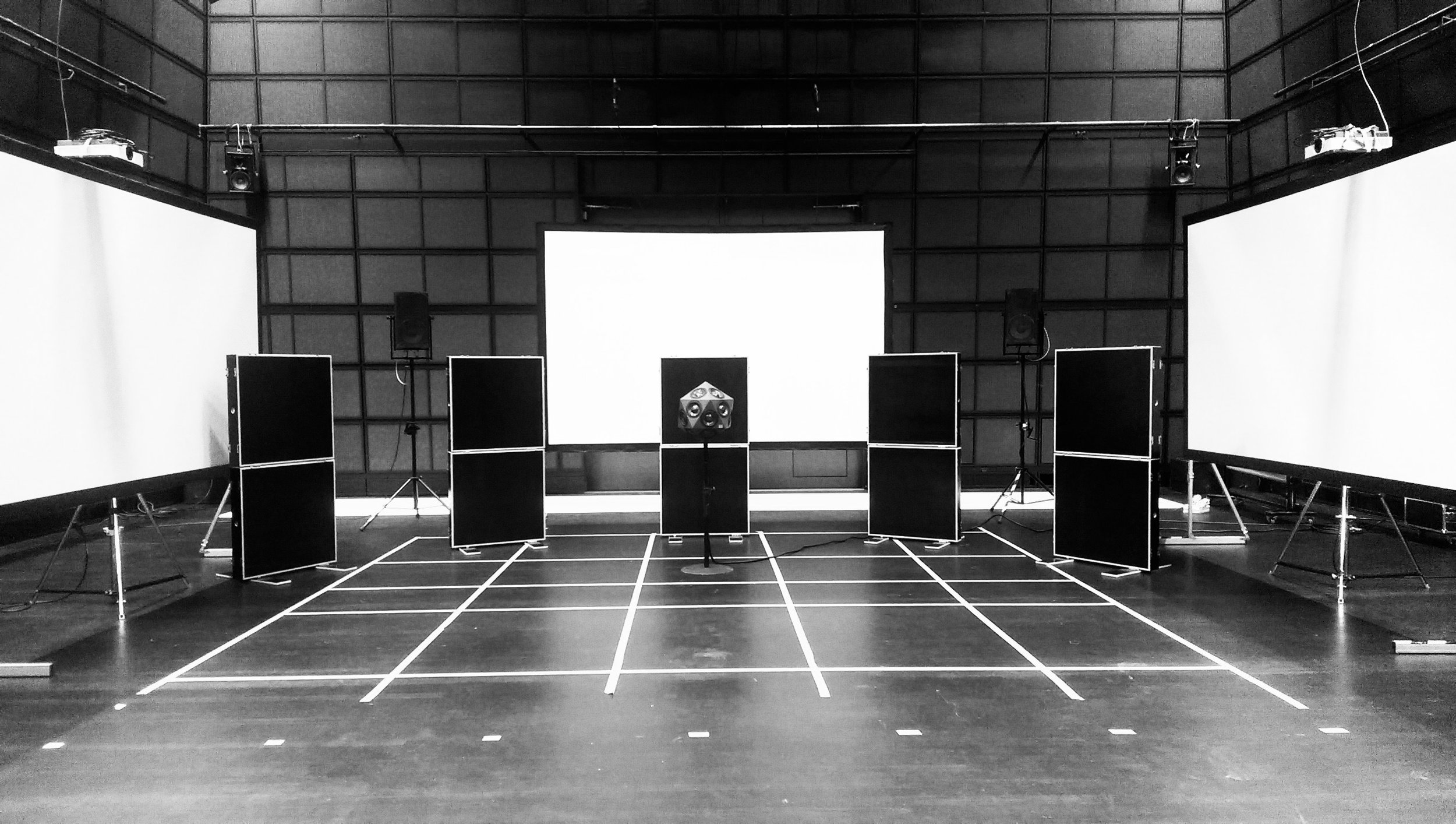
history
THE ICOSAHEDRAL LOUDSPEAKER (IKO) consists of an icosahedral housing carrying 20 individually driven loudspeakers. IKO was built in 2006 by Franz Zotter at IEM Graz, originally with the idea to holographically mimic musical instruments.
Gerriet K. Sharma and Franz Zotter developed the IKO into an instrument and composition tool from 2009-2012 targeting new manifestations of spatial sound in contemporary computer music. As a result of this fruitful composer/acoustician dialogue, the compositions grrawe (10’26’’) and firniss (11’23’’) were developed. These two pieces were stepping stones towards thinking about the device and its acoustical principles as a medium of artistic expression and the orchestration of sound as space.
From 2014-2018 “Orchestrating Space by Icosahedral Loudspeaker” (OSIL) was a research project funded by the Austrian Research Fund within the framework of the Programme for Arts-based Research (FWF/PEEK) at the Institute of Electronic Music and Acoustics Graz (IEM). Members of the research team were: Franz Zotter, Gerriet K. Sharma, Matthias Frank, Florian Wendt, and Markus Zaunschirm supported by Frank Schultz and supervised by Robert Höldrich.
During this time, IKO was tested and performed with in over 40 international concerts and was the subject of over 30 scientific and artistic research publications.
In 2016 the Graz-based start-up sonible developed a new amplification and loudspeaker system taking the IEM concept to a state-of-the-art production, performance, and marketing level.
THE IEM-sonible ICOSAHEDRAL LOUDSPEAKER (IKO) is now available as musical instrument with unique and characteristic features for sound spatialisation and sonic sculpting.
sonible and the new IKO
IKO Story:
https://iko.sonible.com/en.html
sonible commerical IKO:
https://iko.sonible.com/en.html
sonible Trailer:
www.youtube.com/watch?v=uuiQV5cVPQk
COMMON SPATIALIZATION SYSTEMS
for computer music employ loudspeaker arrays that surround the listening area, such as the BEAST (University of Birmingham), the Espro (IRCAM), the Klangdom (ZKM), the CUBE and the MUMUTH (KUG). These either use the psychoacoustic phenomenon of a phantom source to create auditory objects between the loudspeakers, e.g. VBAP and Ambisonics, or aim at recreating a physically accurate sound field, e.g. wave field synthesis.
THE NOVELTY IN IKO
in contrast to common surround loudspeaker systems lies in controlling the strengths of the wall reflections that can be excited from a single performer’s location. That is, an icosahedral loudspeaker is employed as an instrument of adjustable directivity at this location.
In electroacoustic music, the notion of adjustable-directivity loudspeakers was introduced in Paris in the late 1980s by researchers at IRCAM. For the renowned concept study “la timée”, a cube housing six separately controlled loudspeakers was built to achieve freely controllable directivity. Despite the ingenious idea and theory, loudness and focusing strength weren’t convincing enough to be employed in concerts. In 2006, researchers at IEM (University of Music and Performing Arts Graz) reconsidered the theory aiming at an acoustically correct and powerful reproduction of musical instruments in their lower registers, including the entire 3D directivity pattern. The resulting icosahedral loudspeaker (IKO) is more powerful, of larger size, and deploys a larger number of loudspeakers than the IRCAM system. Moreover, success in quality was achieved by reconsidering algorithms and acoustic calibration to control sound beams that are three times narrower those beams of earlier systems.
THE IKO TRULY PERMITS TO FORM THREE-DIMENSIONAL AUDITORY OBJECTS
Its strongly focused sound beams can be projected onto floors, ceilings, and walls. The direct sound from the IKO is often deliberately attenuated so that sounds from acoustic room reflections become audible. Beams are freely adjustable in terms of direction. Different beams can be blended, or their beam width manipulated. Sculptural auditory objects created by the IKO can be moved around towards the reflecting surfaces or collapsed onto the IKO. What’, objects can be composed to include useful gradation of depth, which was discovered in research with audience/listener responses.